About 10,000 people buy Subaru Foresters each month.
It isn’t for the speed.
So, why?
And does the just-redesigned 2019 Forester have more – or less – of the mojo that’s worked so well so far?
The Forester is Subaru’s medium-sized (five-passenger) crossover – and one of the best-selling crossovers in its class.
Probably because it is the only crossover in its class that comes standard with all-wheel-drive that also costs less than rivals like the Honda CR-V and Toyota RAV4 that only offer it at extra cost – and which still cost more even without it.
The Soobie also comes standard with Subaru’s EyeSight suite of driver safety assists and almost nine inches of ground clearance – a snow-day advantage not offered at all in rivals.
Plus a few other things.
Prices start at $24,295 and run to $30,795 for a top-of-the-line Touring trim, which comes standard with voice-activated climate control, heated (and leather trimmed) steering wheel (and seats) a 576 watt premium Harman Kardon audio rig and an upgraded/higher-resolution 8-inch LCD touchscreen with the latest version of Subaru’s Starlink navigation system and apps.
WHAT’S NEW
The 2019 Forester has been completely redesigned.
It’s longer, wider – and roomier than before.
There’s 1.4 inches more legroom in the back – and almost 10 cubic feet more total cargo capacity with the back seats folded down.
The cargo opening is wider, too – by 5.3 inches – and the load floor is lower. The rear doors open wider, too.
The new Forester also gets an updated version of the 2.5 liter engine that was standard equipment in last year’s Forester – as well as a bevy of new tech features, including a technologically amazing but also slightly creepy DriverFocus system (Touring trims) that uses some kind of facial recognition system to scan/identify and remember an individual driver’s face.
It watches you to make sure you are watching the road.
More of the things people who buy Foresters are looking for.
AWD-equipped for less than rivals charge for FWD equipped.
Boxer engine isn’t upright – or turbocharged.
WHAT’S NOT SO GOOD
Though it still costs less to start than its less-well-equipped rivals, it also costs more than it used to.
Subaru says by just $500 – which is true if you compare the 2019’s price with the price of the 2018 with the CVT automatic. But the CVT used to be optional. You used to be able to get a Forester with a six-speed manual – and that one cost $1,500 less ($22,795) than the base price of the of the ’19 with the now-standard CVT.
Auto-stop/start is automatically included with every trim – and you’ll be aware of every stop-start cycle.
Regardless of trim, every 2019 Forester comes standard with Subaru’s 2.5 liter horizontally opposed “boxer” engine – uprated by 12 hp vs. last year to 182 hp (torque output remains more or less the same at 176 ft.-lbs. vs. 174 ft.-lbs. previously).
A continuously variable (CVT) automatic is the only available transmission.
Subaru’s torque-vectoring all-wheel-drive system is standard.
It’s a more advanced system than the AWD systems used in most competitor models because it can route torque side to side rather than just front to back.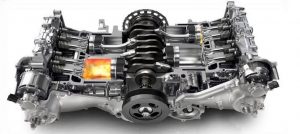
It’s similar to the system used in high-performance Subarus like the WRX and gives both a traction and stability advantage, by correcting for understeer or oversteer when cornering.
The Soobie’s 2.5 liter engine is also an unusual engine in that its cylinders lay flat and are arranged in pairs, facing each other across the crankshaft – as opposed to the usual four-in-a-row (and standing up) position.
That’s why it’s called a boxer engine.
This arrangement spreads the weight of the engine over the chassis more evenly as well as puts it closer to the ground. And that helps counteract the rest of the Forester being so high off the ground (8.7 inches of standard ground clearance).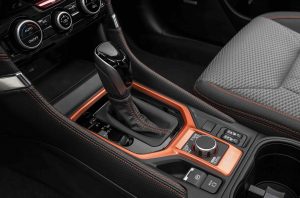
The other advantage of the boxer layout is balance – of the engine itself.
The opposed cylinders – the pistons within – naturally counterbalance their opposite number as the engine runs. This type of engine doesn’t need a heavy external balancer, as most other engine types have to have – so it’s a lighter engine, too.
And there’s no turbo – which reduces the complexity of the engine as well as the stresses the engine is subjected to.
This ought to help with longevity and will probably reduce maintenance/repair costs.
It will absolutely reduce fuel costs.
The non-turbo’d engine doesn’t need premium unleaded fuel to deliver its EPA-rated mileage of 26 city/33 highway.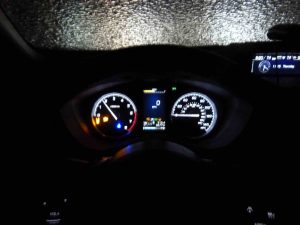
Most turbo’d engines do need it.
If you don’t use it, you get less than the advertised mileage – which is something not often mentioned by the mainstream car press. They ought to mention it, given that the main reason for all these turbo’d engines is to score better on federal gas mileage tests.
But if the buyer has to pay more for gas to get the higher gas mileage . . .
Max trailer tow capacity is 1,500 lbs. – about the same as other crossovers in this class.
Subaru also offers a trailer sway control system which can apply braking pressure to individual wheels, as needed, to keep everything going in a straight line.
The Forester may not get there first – it needs about 9.6 seconds to get to 60 – but it is almost certain to get there, eventually.
Regardless of the weather.
Or the road.
Subarus are very popular in rural areas – like my area – for exactly this reason. People need a vehicle that can get to the road . . . the real (paved) road. Many live on – or have to drive on – dirt roads, steep and irregular.
These are bad enough when it’s dry and warm.
No worries in the Forester. Its winning combination of clearance and a very capable AWD system (with X Mode, you get driver-selectable terrain programs for Snow/Dirt/Mud) make it almost unstoppable.
Of course, a truck-based 4WD SUV could deal with such conditions just as well. But then you’d be driving a 4WD SUV. These are too much for some people.
Including too thirsty.
Good luck finding a 4WD SUV that can get 30-something MPG on the highway. Most average in the low-mid 20s.
And there aren’t that many truck-based 4WD SUVs in the Forester’s size class anymore. You have to move up to something a lot bigger – like a Chevy Tahoe. And these can be hairy to handle on narrow country roads with blind curves, steep drop-offs and no shoulders.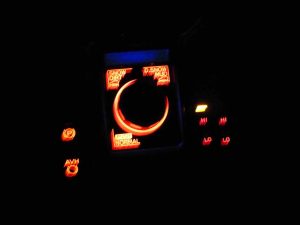
The Forester is also – basically – a car. So it drives like one – and not like a truck-based SUV.
This accounts for its popularity in urban (and suburban) areas. It is as easy to live with as any other car-based crossover.
Just a lot more capable.
If the Forester has a weakness, it is passing power.
There isn’t much.
The 2.5 liter engine is fine for getting up to speed and for maintaining speed but has very little speed in reserve. If you floor it from say 52 MPH – to get around a Clover doing 52 in a 55 – it will take time and space. It helps if you can build up a head of steam before you actually break left to attempt the maneuver.
You can make the Forester feel – and sound – a little quicker via the SI-Drive system, which is standard in all trims. Selecting S dials up sharper throttle response and also kicks the CVT automatic into a lower range (there are no gears in a CVT) which works like pressing the overdrive lockout button in cars with conventional automatics.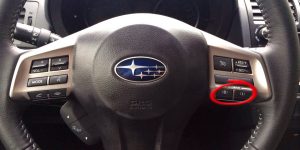
You’d have a bit more speed, probably, with a six-speed manual – which could be geared down for maximum leverage (and which doesn’t slip through a torque converter, hemorrhaging precious horsepower through the fluid coupling) but Subaru doesn’t offer it anymore.
For which you can thank Uncle.
Last year’s Forester with basically the same engine but with the six-speed manual – registered 22 city, 28 highway (vs. 26 city, 32 highway with the CVT, virtually the same as this year’s Forester with the CVT).
That 4-5 MPG deficit may seem like not much – and it isn’t, from the standpoint of the buyer. Keep in mind the $1,500 less the 2018 Forester with the manual cost vs. the new one with the CVT; that money could have paid for a lot of gas.
But it is a huge big deal for Subaru in terms of complying with the government’s fuel economy fatwas.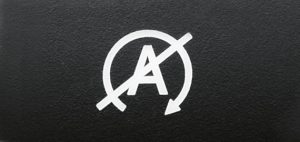
And that’s why the manual’s no longer available.
It’s also why Auto-stop/start is now standard.
This system – which automatically shuts off the engine whenever the vehicle is stopped, then automatically re-starts it when the driver takes his foot off the brake – is becoming all-but-unavoidable in new cars – because of the government’s fuel-efficiency arm-twisting.
The very slight MPG gain – typically about 1 MPG vs. the same car without the system – is an irrelevance to the buyer but matters very much to the car manufacturer when factored over thousands of vehicles sold in a year – which is how CAFE “fleet average” MPGs (and “gas guzzler” fines) are calculated.
These systems can be annoying – the noticeable engine off/on cycling at every traffic light – and it is likely that all that stopping and re-starting will reduce the life of the battery and possibly the starter motor, too.
Again, this is not Subaru’s fault. Blame Uncle.
At least there’s an off switch.
For now.
The ’19 Forester looks so much like the ’18 Forester (why mess with what what people like?) that you have to park the old next to the new to tell the difference.
Or, get inside.
There’s 39.4 inches of backseat legroom vs. 38 inches previously. Cargo capacity has also been upped – both behind the second row (35.4 cubic now vs. 31.5 before) as well as with the seats folded flat (76.1 cubic feet for the ’19 vs. 68.5 cubic feet for the ’18).
The ’19 Forester now has a bit more cargo room than both of its main rivals – the Toyota RAV4 and the Honda CR-V, which max out at 73.4 cubic feet and 75.8 cubic feet, respectively – whereas before it had slightly less.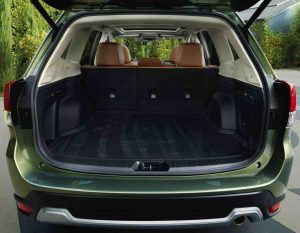
But the most functionally significant dimensional change for the better is probably the new Forester’s wider-opening cargo area.
You’ve got an additional 5.3 inches of latitude (51.2 inches total) to work with when the liftgate’s up – which should be helpful when you’re trying to get something large and unwieldy home from Lowes or Home Depot.
The low load floor will be appreciated by your back – and by your dog.
Subaru’s MyLink system has large, colorful buttons that are easy to distinguish at a glance, so you can access the various apps and functions without taking your eyes off the road for more than a moment.
Speaking of which . . .
Fascinating – but scary – is the Forester’s new DriverFocus system. It scans your face when you first get in the car – and then remembers your face.
It then watches your face – your eyes, and where you’re looking – while you’re driving.
If it sees that you’ve taken your eyes of the road – it can tell when you’re looking out the window – it will nudge you like your mother-in-law via a dashboard display boxed in orange to keep your eyes on the road.
2001: A Space Odyssey was only about 18 years off.
Speaking of AI-ish nudging…
The lane keep assist will protest every time your tire touches the yellow centerline, even when it’s intentional – as when passing or turning off the road – if you don’t turn on your turn signal.
Even when there’s no need to signal – because there’s no other traffic around.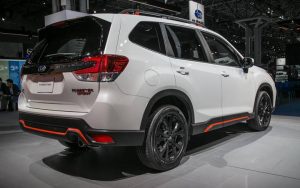
Subaru really wants you to signal, regardless.
As with the Auto-stop/start, these “assists” can be turned off. But you have to do that every time you go for a drive, unless of course you want them on all the time.
One high-tech feature that hasn’t got any downside is the headlights that turn with the steering wheel; it’s standard in Touring trims.
You can also get in-car WiFi and there’s a new Sport trim, which adds a third, more aggressive, Sport Sharp mode to the driver-selectable SI-Drive system, gloss black exterior trim with orange accents and dark grey interior specific to this variant.
THE BOTTOM LINE
Sometimes, speed doesn’t win the race.
. . .
Got a question about cars – or anything else? Click on the “ask Eric” link and send ’em in!
If you like what you’ve found here please consider supporting EPautos.
We depend on you to keep the wheels turning!
Our donate button is here.
If you prefer not to use PayPal, our mailing address is:
EPautos
721 Hummingbird Lane SE
Copper Hill, VA 24079
PS: Get an EPautos magnet (pictured below) in return for a $20 or more one-time donation or a $5 or more monthly recurring donation. (Please be sure to tell us you want a sticker – and also, provide an address, so we know where to mail the thing!)
My latest eBook is also available for your favorite price – free! Click here. 


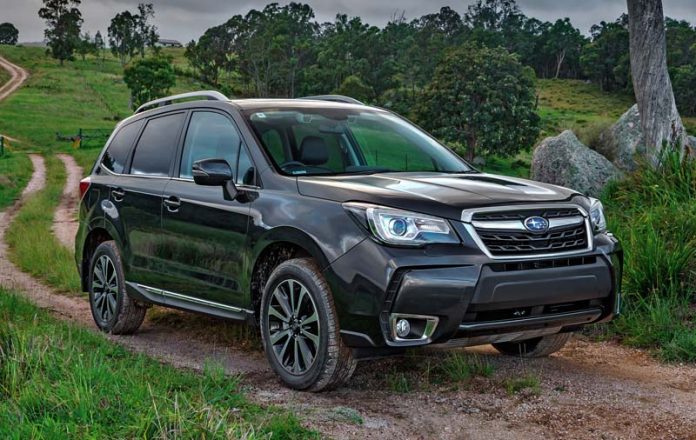

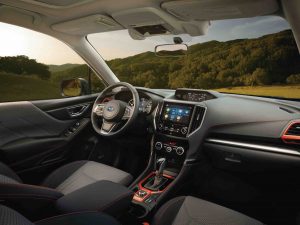
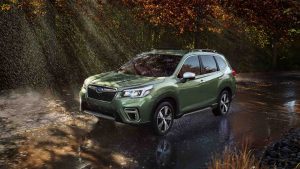

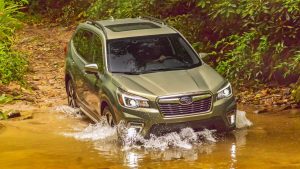

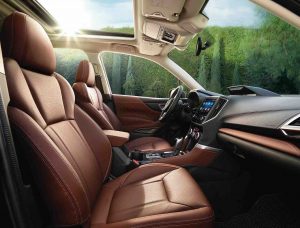
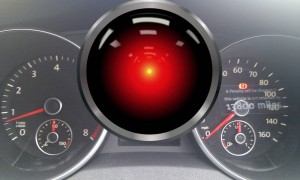







Subarus have an atrocious reliability rating. Might just as well drive a Fiat.
One site – http://www.dashboard-light.com/vehicles/Subaru_Forester.html
The problem is that you just don’t believe in all the Subaru Cult Hype!
They *might* have been better than average reliability back in the 1970s, along with the availability of 4wd in something other than a pickup/bronco/blazer type thing.
The Subaru “recommended maintenance” is just ridiculous, and yet they still experience major failures at low mileage. Most any car should last forever if you do all the stuff that the factory requires/recommends, but then cost wise you would be buying a new car every few years anyway.
Just went to local store in my podunk one traffic light town.Most popular? 7 jeeps and 15 Subarus,place packed with subies.
The standard EyeSight system makes this new model a non-starter for me. I don’t like lane-departure warning systems in general (and auto stop/start even less), but a former coworker’s EyeSight would freak out every time she drove on FM-2222 in Austin (the fun mountainous twisty part). Presumably because it saw the limestone cliffs and thought she had suicidal thoughts.
https://goo.gl/maps/r1nBgjJ4YLs
Hi Chip,
Amen. And, just wait… I have a Prius story that is genuinely scary…
Manufacturers are going nuts with crazier and crazier technology. I’ve been seeing ads for a Hyundai “feature” where the car won’t let you open the doors when parked if it senses oncoming traffic. So if you need to get out of the vehicle in a real hurry (it’s on fire, some mugger has climbed in from the other side, whatever) and the system decides it is not “safe” to do so or just malfunctions, it looks like you’re basically screwed.
Hi Jason,
You’re ahead of me on that one – I hadn’t heard yet! Crikey!
Things are very much out of hand…
Death by Safety.
If you can find a Subaru for MSRP. I looked a lot about a year ago as I was interested in buying one. Here (Fargo,ND) you can’t find a new Subaru for anything close to the prices quoted on their website; try thousands more.
I have owned 3 Subaru autos. The 1st was an 1988 5 speed wagon which I bought used in 1994 for $1800.00 . The Car had 118,000 miles on the odometer. I drove it for 8 years as a delivery car for my business doing only routine maintenance,the most expense being a clutch replacement. I finally sold the car in 2001 for $500.00. The car when I sold it had 310,000 Miles on the odometer. Since then I have bought 2 Subaru cars for family use,with no complaints. The bottom line is that Subaru cars are built like battleships and are designed to last.
I just can’t get over the fact that Subaru built millions of engines with a design flaw that led to head gasket failure (requiring engine rebuild) at as low as 70K miles.
Supposedly fixed by a plumbing variation in 2011 and later models ????
The essence of this Forester (and most other Subies,) can be summarized with just one word. That word is ‘Stodgy.”
It will sell well, because a lot of buyers in this segment are very stodgy people.
Nothing wrong with stodgy cars, or people. I wear my stodginess as a badge of honor. If one of the most stodgy cars ever offered – the Studebaker Scotsman – were to be manufactured and sold again I’d be lining up to buy one.
How does the room behind the back seat compare with that of the Outback? My view is that the Outback had more floor space, but the Forester had a higher roofline. My opinion is that floor space is more valuable than a tall roof, all things being equal. I like the Foresters on cost, as they are typically a couple thousand less than Outbacks. I have two Subarus, and while they are not the most reliable cars, they are very durable and easy to work on. My ’95 in particular has been one tough little car! (Four teenage drivers!) Parts are cheap, and they are easy to work on.
Also, the stuff with the boxer engine is true, it makes for great handling! My ’95 Legacy especially, sits lower than an Outback, and with the low CG it handles great! Best handling car I’ve ever had. (But not right now, it needs struts and tires….) You can’t get that car stuck either, unless it belly’s up to the snow. So, the extra ground clearance is worth it in the Outback/Forester.
I will buy another (low trim level) Subaru when the time comes. I do dislike all the nanny-state safety crap they have on there though. I do like that they still have the naturally aspirated engine in a decent size displacement.
What I can never understand is why Subaru stays with that dreadful pancake 4. After all these decades Subaru can’t come up with a better engine? Chevy stopped making 283’s a long time ago for a good reason.
And AWD? Here in Florida I can’t see a good reason for it regardless of the expense. Also, Subaru offers only AWD whether you want it or not. They aren’t even trying to reach out to the non-AWD crowd at all.
But it does give me a warm feeling to know this Subaru could go neck and neck with my old Chevy Aveo. It would be a real nail-biter all the way through the quarter mile.
350 was the same basic engine as the 283
Yes, it evolved into the 350 and then the 350 was left behind too.
VW used to make flat fours. They trashed them when they out with better engines. Thank goodness for that.
I just don’t see the advantage of a flat four in a passenger car today. I really don’t see the advantage when you have to do head work on them either.
The original Subaru flat-four was largely patterned after the engine in the Borgward Arabella. Since then it has been redesigned so many times that the basic layout is really all that remains. Not that different than the Chevy small-block’s journey from 283 to 350 to whatever it is now – the 90 degree V8 layout is the same but the technology used in the engine has changed over the decades.
Subaru has offered other types of engines (mainly 2 and 3 cylinder inline) in its smaller vehicles over the years.
They should have never gotten rid of the XT trim.
I have a 2008 Outback XT. I love that car. A sleeper WRX in a “stodgy” looking wagon. With a set of studded Hakkapeliita’s, I can get up into the mountains on ice covered roads doing 70 all the way for a little backcountry skiing with the Huskies! With a little radar help…no problem dodgin’ smokeys. It suffered a cracked piston in 2016(most likely due to sh@tty fuel and crummy federal epa factory engine tuning) so I downloaded a pdf factory manual for $15 and I tore the engine ALL the way down/rebuilt it in my garage. I spent about 5K replacing everything that was worn…hubs, brakes, clutch, forged pistons, seals, etc. Then set it up with a nice little COBB engine tuner…even better! And best of all, the only safety gear to note is the All Wheel Drive, turbocharged engine, and a set of brakes (I turn off the traction control, no need for it if you know how to drive). All the 1984 stuff on the ‘Brave New Subaru’…you can have it! Me, I’ll be rebuilding that 08’ XT for as long as I can keep her running and right up until I punch out of this dystopic quagmire and sail away on the pirate ship. By the way, running the older car saves a lot of money on insurance, taxes, and keeping up with the jones…plus…I built that mother f’r. Pirate Murray, Out.
Eric, btw, it is good to still have you here with this website after all the years and all the turmoil…personal and professional. Freeing the bonds of the relationship lie that is forced upon us in this perverted culture, although painful, shall prove beneficial going forward. So much time, energy, and resources are now no longer squandered and have been returned to their rightful owner…you. Just don’t f’ it up my friend. There are some ranches in Nevada that will take care of that if needed.
Morning, Pirate!
Thank you for the kind words. The cats also seem to like me okay! I have my friends – including all of the great people here. And I’m healthy and have an orange Trans Am. What could be better?
I also have several friends in the same situation. This culture has, indeed, acted like carbolic acid on relationships between men and women. My two friends are dating – and it’s a scheisse schau. I’ve opted out. I stay home with the cats!
Hi Pirate,
Excellent!
I have my TA, but it’s not a daily driver because I can’t bear to let it get wet. I preserve it, like an icon – of that “better managed time.”
Meanwhile, I have my eye on an ’85 Cutlass… if I ca scrape together the money. This will be my forever car, because I can (like you did) rebuild it forever. Or at least, as long as I last.
These cars sold in huge numbers when new – and one drive will tell you why. Pillowy bench seats; a genuinely luxurious ride. Room for adults in both the front ad back. And room for sex in the back!
Huge trunk.
And while the 307 was not a rocket, it was capable of (yes, really) 30 MPG on the highway. With a carb.
Hi Eric,
re this: “That 4-5 MPG deficit may seem like not much – and it isn’t, from the standpoint of the buyer. Keep in mind the $1,500 less the 2018 Forester with the manual cost vs. the new one with the CVT; that money could have paid for a lot of gas.”
That’s about 550 gallons of gas difference over 100K miles of driving, about $1,400 at current gas prices. With a $1,000 price differential between the CVT and manual(after accounting for the $500 overall price increase this year), the CVT pays for the increased price differential around 70K miles, and saves a little every mile afterwards.
Most people view shifting as a hassle, something they’d pay EXTRA to not have to do.
I’m guessing Sooby killed off the manual because only a handful of people (like you) who are inclined to buy a slow-ish, non-sporty vehicle like this enjoy shifting that much, or are unsavvy enough to be drawn into a dealership because of the lowest priced stripped model advertised, despite it not having the automatic and other features the salesperson will talk them into buying.
At some low sales number a niche model will get dropped. Sucks for the people in that niche. Sucks even more if CAFE is quietly behind it becoming such a niche.
I also think that having only one type of transmission simplifies the manufacturing line and all the logistics of parts stocking, configuration control in the factory, etc., etc. I am warming up to automatics even though I am a die-hard manual guy. I think the automatics (to include the CVT) win out in the maintenance dept. The clutch WILL wear out, and that will be a thousand bux, so I view the extra thousand for the CVT over the manual as a push. Dunno about changing the auto tranny fluid in the new cars, though. The automatics I’ve had were all old cars, where you drop the pan and take a drain plug out of the torque converter. (No problem) Even better, I have an ’05 Outback with a SPIN ON transmission filter! With that and the drain plug (no dropping the pan) talk about easy!
I found trans fluid changes for my stick shift Subie are less than half for the automatics at the dealer, and now I change the fluid at home with little hassle. No filter to change and no oddball techniques to get the atf out. I’ve never owned a car that had a torque converter with a plug–changing fluid on my 727s is a pain in the butt. Since I don’t beat on my cars (I leave that to my teenagers) I routinely get better than 150,000 miles on my clutches. My Geo Metro got its first clutch transplant at 185,000 miles.
I even delude myself that I could change the clutch myself were I so inclined. A lot cheaper than swapping automatics.